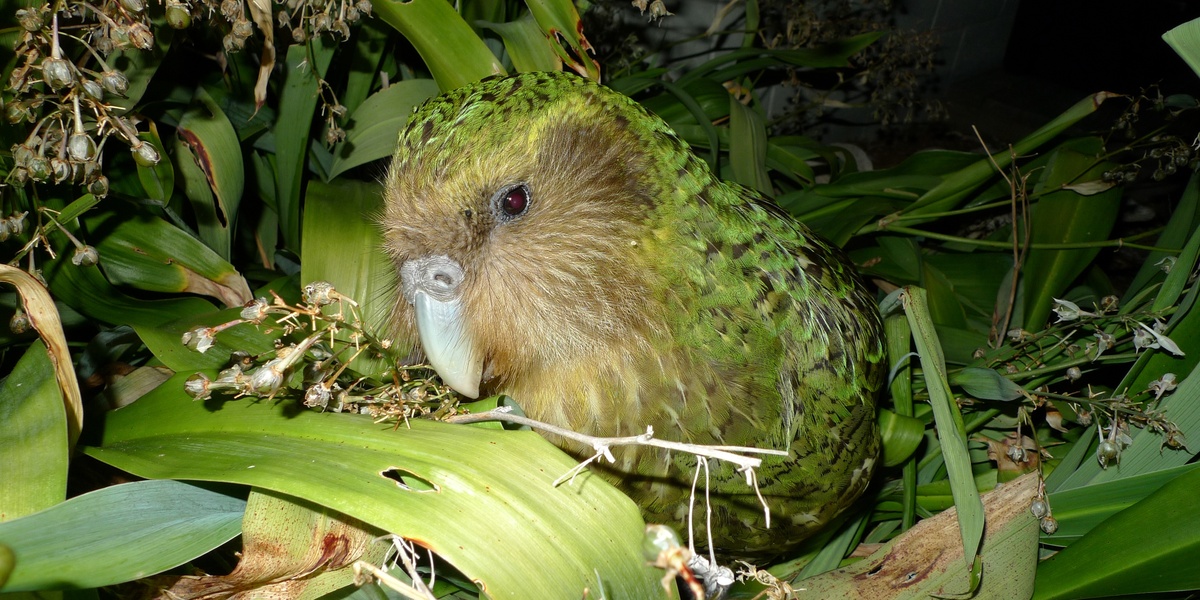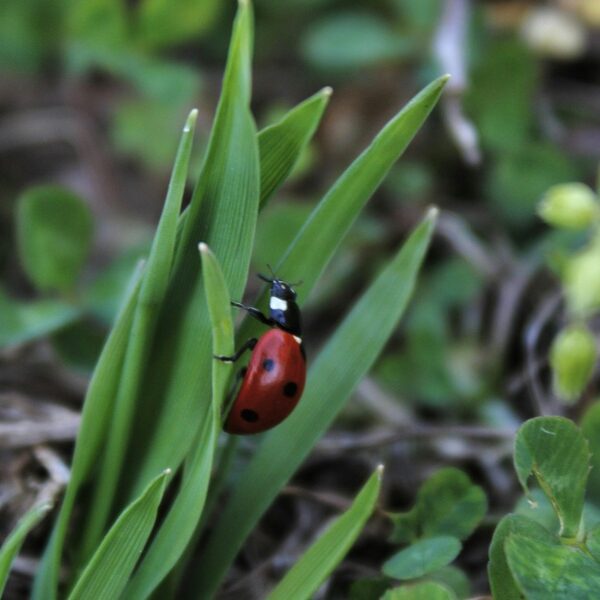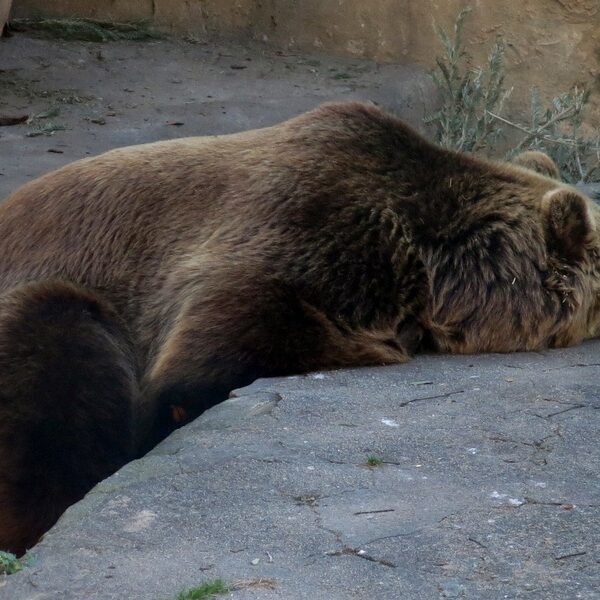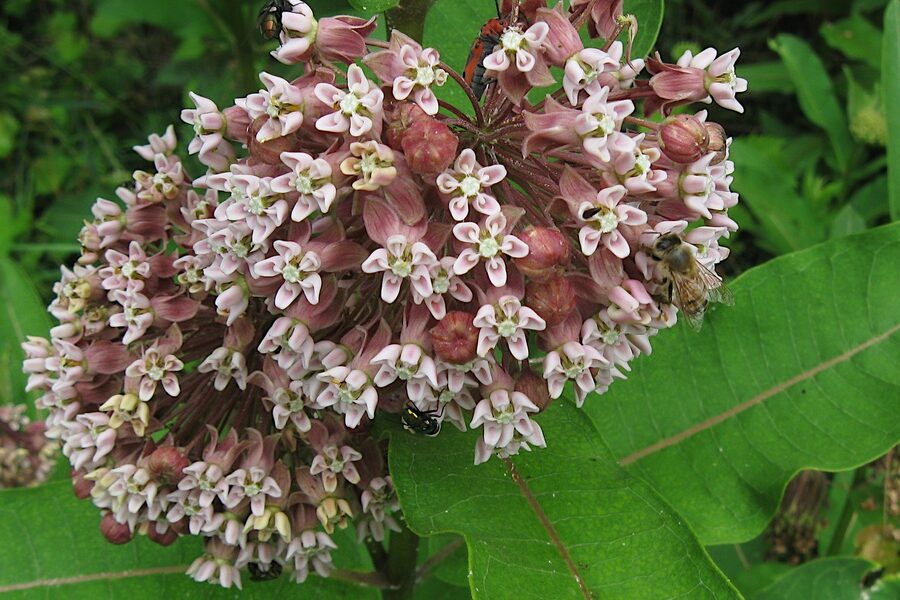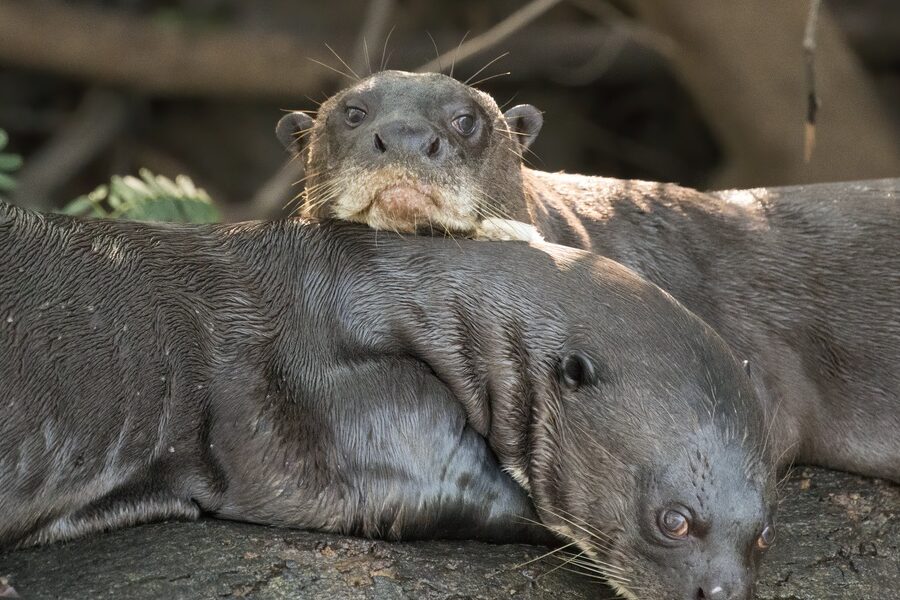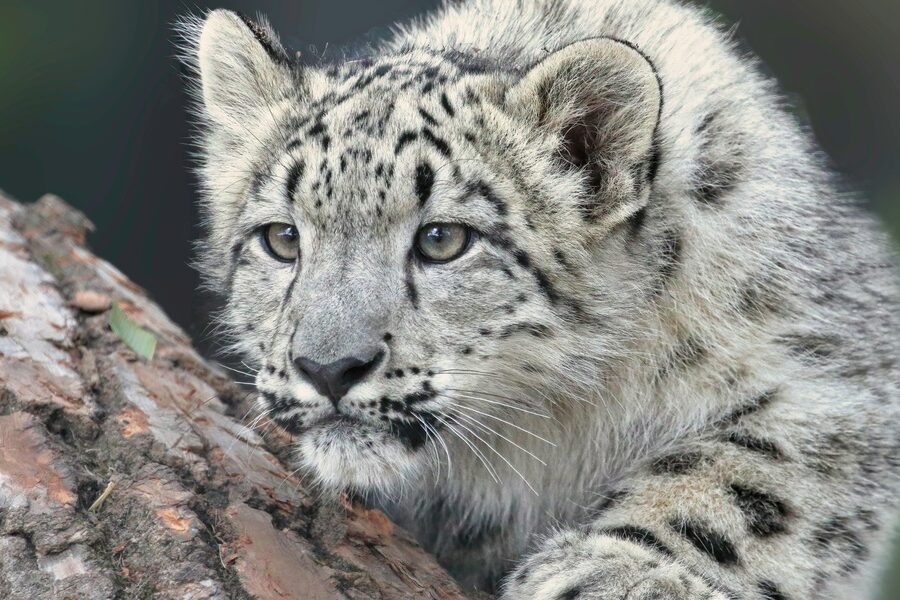Oceania’s islands and coastal ecosystems host a unique mix of birds shaped by isolation, volcanic peaks, and coral atolls. From sea‑birds that ride the trade winds to forest specialists on remote mountains, the region’s avifauna tells a story of adaptation and movement.
There are 98 Birds of Oceania, ranging from Abbott’s Booby to ʻIʻiwi. For each species, you’ll find below Scientific name,IUCN status,Range — a compact layout to help you scan conservation status and geographic distribution quickly, and plan further reading or fieldwork; you’ll find below the full list and details.
How reliable are the conservation statuses listed here?
The IUCN status column reflects widely used assessments but may lag behind recent local surveys; use the listed status as a baseline and verify critical cases with the IUCN Red List or regional conservation groups before making management or travel decisions.
Can this list help me plan birdwatching trips across Oceania?
Yes — the Scientific name and Range columns help confirm identifications and likely locations, while the IUCN status highlights species needing careful or restricted access; combine this list with local field guides, seasonal timing, and permit checks for best results.
Birds of Oceania
| Common name | Scientific name | IUCN status | Range |
|---|---|---|---|
| Abbott’s Booby | Papasula abbotti | EN | Breeds only on Christmas Island, Australia. |
| ʻAkiapōlāʻau | Hemignathus wilsoni | EN | Endemic to the island of Hawaiʻi. |
| Albert’s Lyrebird | Menura alberti | NT | A small area of subtropical rainforest in eastern Australia. |
| ʻAlauahio | Paroreomyza montana | EN | Endemic to Maui, Hawaiʻi. |
| ʻAmakihi | Chlorodrepanis virens | LC | Endemic to the Hawaiian Islands. |
| ʻAnianiau | Magumma parva | VU | Endemic to the island of Kauaʻi, Hawaiʻi. |
| ʻApapane | Himatione sanguinea | LC | Endemic to the main Hawaiian Islands. |
| Auckland Island Teal | Anas aucklandica | VU | Endemic to the Auckland Islands, New Zealand. |
| Australasian Gannet | Morus serrator | LC | Coasts of Australia, Tasmania, and New Zealand. |
| Australasian Shoveler | Spatula rhynchotis | LC | Australia and New Zealand. |
| Australian Brushturkey | Alectura lathami | LC | Eastern Australia. |
| Australian King Parrot | Alisterus scapularis | LC | Eastern Australia. |
| Australian Magpie | Gymnorhina tibicen | LC | Australia and southern New Guinea; introduced to New Zealand. |
| Australian Owlet-nightjar | Aegotheles cristatus | LC | Australia and southern New Guinea. |
| Australian Pelican | Pelecanus conspicillatus | LC | Australia, New Guinea, and nearby islands. |
| Australian Ringneck | Barnardius zonarius | LC | Widespread across inland Australia. |
| Australian Wood Duck | Chenonetta jubata | LC | Widespread in Australia. |
| Azure Kingfisher | Ceyx azureus | LC | Northern and eastern Australia, New Guinea, and nearby islands. |
| Banded Rail | Hypotaenidia philippensis | LC | Australia, New Zealand, New Guinea, and many Pacific islands. |
| Bar-tailed Godwit | Limosa lapponica | NT | Breeds in Arctic; non-breeding visitor to Australia and New Zealand. |
| Barking Owl | Ninox connivens | LC | Australia and parts of New Guinea. |
| Bell Miner | Manorina melanophrys | LC | Southeastern Australia. |
| Black Noddy | Anous minutus | LC | Tropical and subtropical seas, with major colonies in Oceania. |
| Black Swan | Cygnus atratus | LC | Australia; introduced to New Zealand and other countries. |
| Black-browed Albatross | Thalassarche melanophris | LC | Circumpolar in Southern Ocean, breeding on subantarctic islands of Australia and NZ. |
| Black-faced Cuckooshrike | Coracina novaehollandiae | LC | Widespread in Australia, New Guinea, and Solomon Islands. |
| Blue-faced Honeyeater | Entomyzon cyanotis | LC | Northern and eastern Australia and southern New Guinea. |
| Boobook | Ninox boobook | LC | Australia, southern New Guinea, and eastern Indonesian islands. |
| Brown Cuckoo-Dove | Macropygia phasianella | LC | Eastern Australia. |
| Brown Goshawk | Accipiter fasciatus | LC | Widespread in Australia, New Guinea, and nearby islands. |
| Brown Thornbill | Acanthiza pusilla | LC | Eastern and southeastern Australia. |
| Budgerigar | Melopsittacus undulatus | LC | Arid and semi-arid inland Australia. |
| Buller’s Albatross | Thalassarche bulleri | NT | Breeds on New Zealand’s subantarctic islands, forages across the Pacific. |
| Bush Stone-curlew | Burhinus grallarius | LC | Widespread in Australia and southern New Guinea. |
| California Quail | Callipepla californica | LC | Introduced and established in New Zealand and Norfolk Island. |
| Campbell Teal | Anas nesiotis | VU | Endemic to Campbell Island, New Zealand. |
| Cape Barren Goose | Cereopsis novaehollandiae | LC | Coastal southern Australia and Tasmania. |
| Caspian Tern | Hydroprogne caspia | LC | Global distribution including coasts and inland waters of Australia and NZ. |
| Cassowary (Southern) | Casuarius casuarius | LC | Northeastern Australia, New Guinea, and nearby islands. |
| Cattle Egret | Bubulcus ibis | LC | Self-introduced and established in Australia. |
| Chatham Albatross | Thalassarche eremita | VU | Breeds only on The Pyramid, Chatham Islands, New Zealand. |
| Chatham Oystercatcher | Haematopus chathamensis | EN | Endemic to the Chatham Islands, New Zealand. |
| Chatham Petrel | Pterodroma axillaris | EN | Breeds only on the Chatham Islands, New Zealand. |
| Chatham Shag | Leucocarbo onslowi | CR | Endemic to the Chatham Islands, New Zealand. |
| Chestnut-breasted Mannikin | Lonchura castaneothorax | LC | Australia and New Guinea; introduced to French Polynesia. |
| Cicadabird | Edolisoma tenuirostre | LC | Eastern and northern Australia, New Guinea and nearby islands. |
| Cockatiel | Nymphicus hollandicus | LC | Widespread across arid and semi-arid Australia. |
| Common Blackbird | Turdus merula | LC | Introduced and widespread in Australia and New Zealand. |
| Common Diving Petrel | Pelecanoides urinatrix | LC | Circumpolar subantarctic islands of New Zealand and Australia. |
| Common Myna | Acridotheres tristis | LC | Introduced and invasive in Australia, NZ, Fiji, and other Pacific islands. |
| Common Starling | Sturnus vulgaris | LC | Introduced and widespread in Australia, New Zealand, and Polynesia. |
| Crested Pigeon | Ocyphaps lophotes | LC | Widespread across Australia. |
| Crested Tern | Thalasseus bergii | LC | Coasts of Australia and many Pacific and Indian Ocean islands. |
| Crimson Rosella | Platycercus elegans | LC | Eastern and southeastern Australia. |
| Diamond Firetail | Stagonopleura guttata | NT | Southeastern Australia. |
| Dollarbird | Eurystomus orientalis | LC | Breeds in eastern Australia; migrates to New Guinea and nearby islands. |
| Double-banded Plover | Charadrius bicinctus | LC | Breeds in New Zealand; some migrate to Australia. |
| Dusky Moorhen | Gallinula tenebrosa | LC | Australia, New Guinea, and Indonesia. |
| Eastern Rosella | Platycercus eximius | LC | Southeastern Australia and Tasmania; introduced to New Zealand. |
| Eastern Spinebill | Acanthorhynchus tenuirostris | LC | Eastern Australia. |
| Eastern Yellow Robin | Eopsaltria australis | LC | Eastern and southeastern Australia. |
| Eclectus Parrot | Eclectus roratus | LC | Northeastern Australia, New Guinea, and nearby islands. |
| Emu | Dromaius novaehollandiae | LC | Widespread across mainland Australia. |
| Fairy Martin | Petrochelidon ariel | LC | Widespread in Australia; non-breeding visitor to New Guinea. |
| Fairy Prion | Pachyptila turtur | LC | Breeds on subantarctic islands of Australia and New Zealand. |
| Fairy Tern | Sternula nereis | VU | Coastal Australia, New Zealand, and New Caledonia. |
| Fan-tailed Cuckoo | Cacomantis flabelliformis | LC | Australia, New Guinea, New Caledonia, Fiji, and New Zealand. |
| Figbird | Sphecotheres vieilloti | LC | Northern and eastern Australia, southern New Guinea. |
| Finsch’s Duck | Chenonetta finschi | EX | Formerly widespread in New Zealand. |
| Flame Robin | Petroica phoenicea | NT | Southeastern Australia and Tasmania. |
| Forest Raven | Corvus tasmanicus | LC | Tasmania and parts of southeastern Australia. |
| Galah | Eolophus roseicapilla | LC | Widespread across Australia. |
| Gang-gang Cockatoo | Callocephalon fimbriatum | EN | Southeastern Australia. |
| Giant Petrel (Southern) | Macronectes giganteus | LC | Circumpolar in the Southern Ocean, breeding on Macquarie Island (Australia). |
| Golden Whistler | Pachycephala pectoralis | LC | Widespread in Australia, New Guinea, and Pacific islands. |
| Gouldian Finch | Chloebia gouldiae | NT | Endemic to tropical northern Australia. |
| Great Bowerbird | Chlamydera nuchalis | LC | Northern Australia. |
| Great Cormorant | Phalacrocorax carbo | LC | Widespread globally, including Australia and New Zealand. |
| Green Rosella | Platycercus caledonicus | LC | Endemic to Tasmania. |
| Grey Fantail | Rhipidura albiscapa | LC | Australia, New Guinea, New Caledonia, and New Zealand. |
| Grey Teal | Anas gracilis | LC | Australia, New Zealand, and New Guinea. |
| Ground Parrot | Pezoporus wallicus | LC | Coastal southeastern and southwestern Australia. |
| Haast’s Eagle | Hieraaetus moorei | EX | Formerly endemic to the South Island of New Zealand. |
| Hihi | Notiomystis cincta | VU | A few predator-free offshore islands of New Zealand. |
| Hoary-headed Grebe | Poliocephalus poliocephalus | LC | Australia. |
| Hooded Plover | Thinornis cucullatus | VU | Coastal southern Australia and Tasmania. |
| Huia | Heteralocha acutirostris | EX | Formerly endemic to the North Island of New Zealand. |
| ʻIʻiwi | Drepanis coccinea | VU | Endemic to the Hawaiian Islands. |
| Kakapo | Strigops habroptilus | CR | A few predator-free offshore islands of New Zealand. |
| Kākā | Nestor meridionalis | EN | Endemic to New Zealand. |
| Kea | Nestor notabilis | EN | Endemic to the alpine regions of New Zealand’s South Island. |
| Kererū | Hemiphaga novaeseelandiae | LC | Endemic to New Zealand. |
| King Penguin | Aptenodytes patagonicus | LC | Breeds on subantarctic islands including Macquarie Island (Australia). |
| Kioea | Chaetoptila angustipluma | EX | Formerly endemic to the island of Hawaiʻi. |
| Kiwi (North Island Brown) | Apteryx mantelli | VU | Endemic to the North Island of New Zealand. |
| Kōkako (North Island) | Callaeas wilsoni | NT | Endemic to the North Island of New Zealand. |
| Kookaburra (Laughing) | Dacelo novaeguineae | LC | Eastern Australia; introduced to Tasmania and southwest Australia. |
| Laysan Albatross | Phoebastria immutabilis | NT | North Pacific, with Hawaiian Islands as main breeding area. |
Images and Descriptions
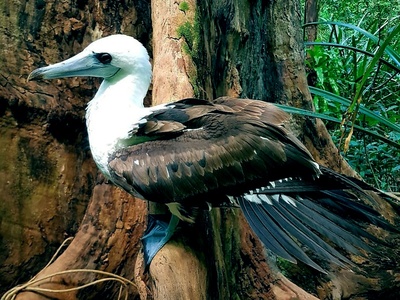
Abbott’s Booby
A large, black-and-white seabird that nests in tall rainforest trees. It is the only member of its genus and is threatened by habitat loss and invasive species on its single breeding island, making it one of the world’s rarest boobies.

ʻAkiapōlāʻau
A critically endangered Hawaiian honeycreeper with a unique, two-part bill. It uses its short lower mandible to peck wood and its long, curved upper mandible to probe for insects. It inhabits high-elevation native forests, relying on koa and ʻōhiʻa trees for survival.
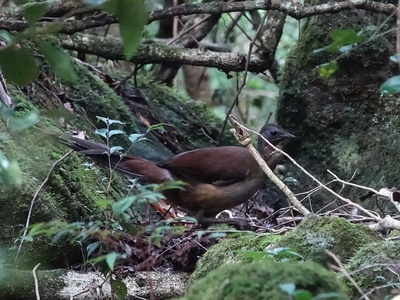
Albert’s Lyrebird
A spectacular ground-dwelling bird known for its powerful, complex song and mimicry. The male has an elaborate lyre-shaped tail used in courtship displays. It is shyer and rarer than its relative, the Superb Lyrebird, foraging in the dense, damp forest floor.
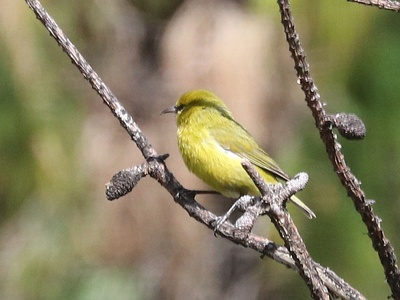
ʻAlauahio
Also known as the Maui Creeper, this small Hawaiian honeycreeper is a foliage-gleaning insectivore. It has a slightly decurved bill and is typically found in wet native forests at high elevations. Its population has severely declined due to habitat loss and introduced diseases.
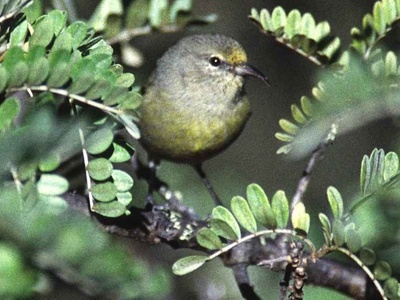
ʻAmakihi
A small, generalist honeycreeper, one of the most common native birds in Hawaiʻi. It has a yellowish-green body and a short, decurved bill used for sipping nectar and eating insects. It shows some resistance to avian malaria, allowing it to survive at lower elevations.
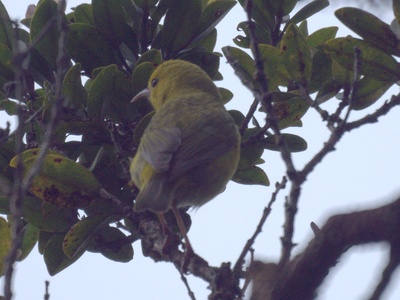
ʻAnianiau
The smallest Hawaiian honeycreeper, this bright yellow bird is a nectarivore found in high-elevation wet forests. It has a short, thin, decurved bill perfect for feeding on the flowers of ʻōhiʻa trees. Its population is threatened by habitat degradation and avian diseases.
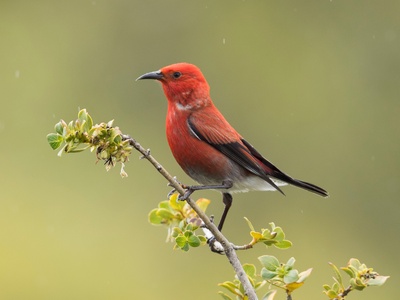
ʻApapane
A vibrant, crimson-red Hawaiian honeycreeper with black wings and a white undertail. It is a highly active nectarivore with a curved bill, often seen flitting between ʻōhiʻa flowers. Its distinctive wing whirring can be heard as it flies in large flocks.
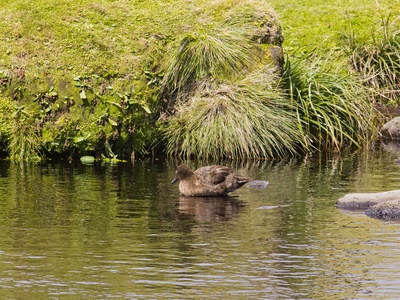
Auckland Island Teal
A small, flightless dabbling duck found only on predator-free islands in its subantarctic group. It is brown, nocturnal, and secretive, foraging for invertebrates in coastal vegetation and streams. Its survival depends on the continued absence of introduced mammalian predators.
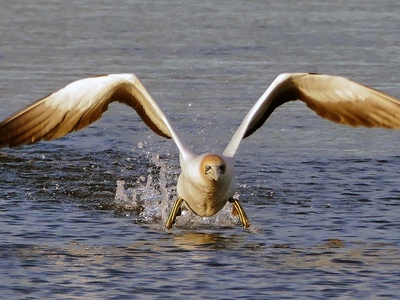
Australasian Gannet
A large, striking seabird with golden-yellow head, white body, and black-tipped wings. It is known for its spectacular high-speed plunge dives to catch fish. It breeds in dense, noisy colonies on coastal islands and cliffs, forming long-term monogamous pairs.
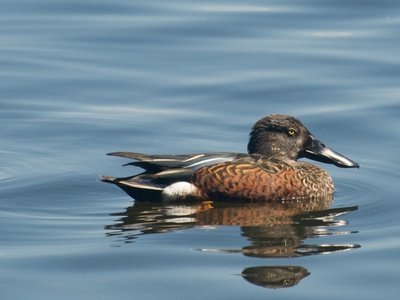
Australasian Shoveler
A medium-sized duck easily identified by its enormous, spatula-shaped bill, which it uses to filter small invertebrates from the water. The breeding male has an iridescent green head, a white crescent on his face, and a mottled chest. It inhabits freshwater wetlands.
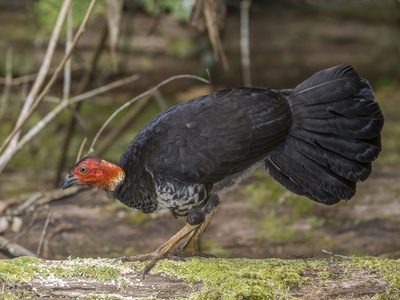
Australian Brushturkey
A large megapode known for its distinctive black plumage, bare red head, and yellow wattle. Instead of sitting on its eggs, the male builds a huge mound of leaf litter. The heat from the decaying vegetation incubates the eggs, a remarkable breeding strategy.
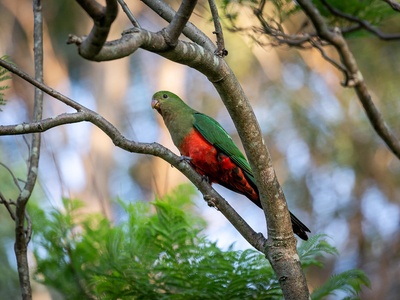
Australian King Parrot
A large, beautiful parrot with striking sexual dimorphism. The male is a brilliant scarlet red with green wings and a blue back, while the female is mostly green. They are found in humid forests and woodlands, often feeding quietly on seeds and fruit in trees.
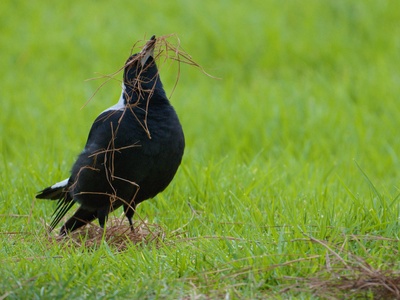
Australian Magpie
A medium-sized black and white bird renowned for its complex, melodious song. Highly intelligent and social, they live in family groups and defend their territories vigorously, especially during nesting season. They are one of Australia’s most familiar and accomplished songbirds.
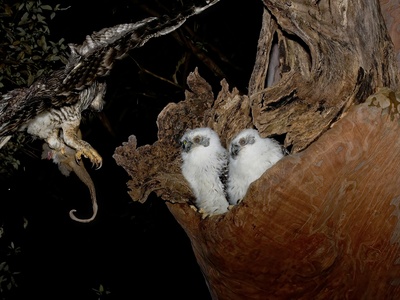
Australian Owlet-nightjar
A small, nocturnal bird with soft, mottled grey-brown plumage, a wide bill, and large eyes. Resembling a tiny owl, it is the smallest nocturnal bird in Australia. It roosts in tree hollows during the day and hunts insects at night.
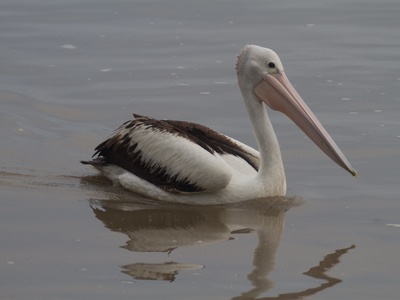
Australian Pelican
An enormous waterbird with the longest bill of any bird in the world. Predominantly white with black flight feathers, it is found on fresh and saltwater wetlands. It is highly mobile, traveling vast distances to find suitable water conditions and food sources.
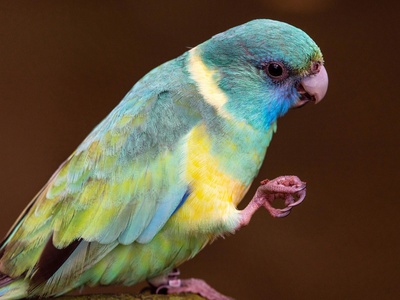
Australian Ringneck
A medium-sized parrot with a distinctive yellow ring on its hindneck. Its plumage varies geographically but is generally green with a blue or green head. It inhabits woodlands, savannas, and scrublands, feeding on seeds, nectar, and insects.
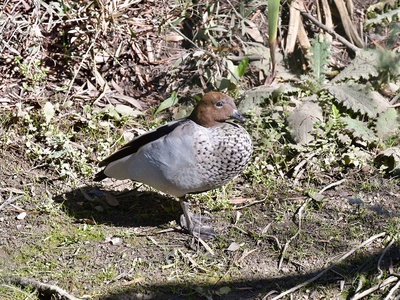
Australian Wood Duck
A medium-sized goose-like duck often found far from water. It has a grey body, a dark brown head, and a speckled chest. It nests in tree hollows and is commonly seen grazing in grasslands, parks, and agricultural areas, behaving more like a goose than a typical duck.
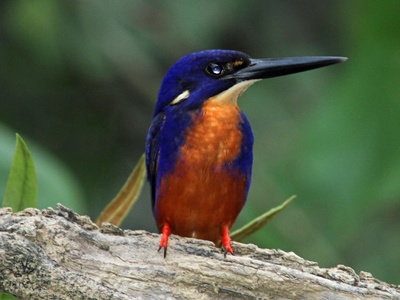
Azure Kingfisher
A tiny, brilliantly colored kingfisher with a deep blue back, orange underparts, and a long, dagger-like black bill. It inhabits streams, lakes, and mangroves, perching on low branches before diving spectacularly into the water to catch small fish and crustaceans.
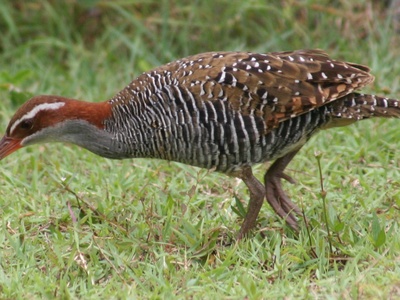
Banded Rail
A secretive, chicken-sized bird of wetlands and dense grasslands. It has a long bill, barred black-and-white plumage, and a chestnut band across its chest. Though widespread, it is often difficult to see as it forages stealthily for invertebrates and seeds.
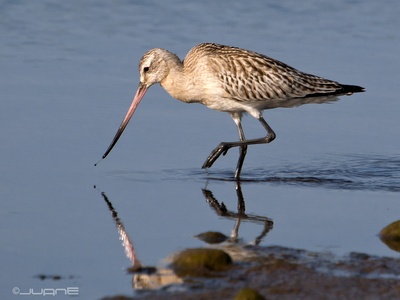
Bar-tailed Godwit
A large wader famous for its record-breaking, non-stop migratory flight from Alaska to New Zealand, covering over 12,000 km. It has a long, slightly upturned bill used to probe mudflats for invertebrates. Its plumage is mottled brown, becoming brick-red in breeding season.
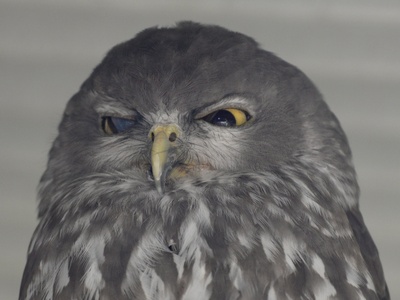
Barking Owl
A medium-sized, hawk-like owl named for its dog-like barking calls, which can sometimes escalate into a terrifying, human-like scream. It has grey-brown plumage with white spots and large, piercing yellow eyes. It preys on a wide variety of animals.
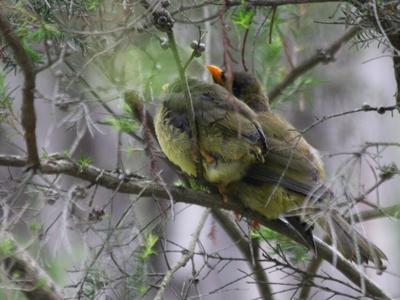
Bell Miner
A colonial honeyeater known for its incessant, bell-like “tink” calls that dominate its forest habitat. It aggressively defends its territory against other bird species to farm insects called psyllids. This behavior can lead to forest dieback, a condition known as Bell Miner Associated Dieback.
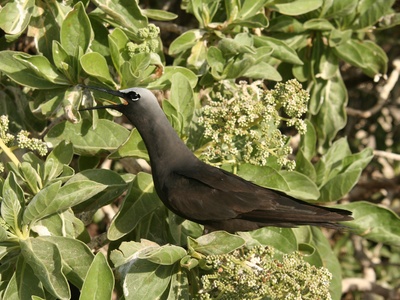
Black Noddy
A slender, all-black tern with a contrasting white cap. Unlike many terns, it builds a nest of leaves and guano in trees or shrubs on tropical islands. It feeds by dipping for small fish at the ocean’s surface rather than plunge-diving.
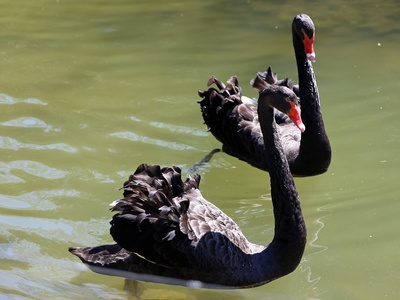
Black Swan
A large, graceful waterbird, famous for its entirely black plumage which contrasts with its bright red bill. It is highly nomadic, moving in response to rainfall and wetland availability. It is often seen on lakes and rivers, feeding on aquatic vegetation.
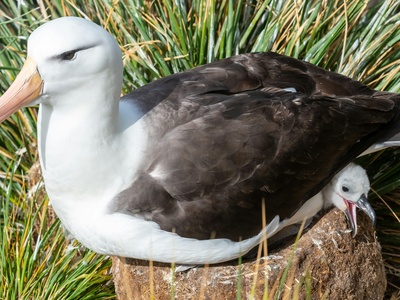
Black-browed Albatross
A medium-sized albatross with a striking dark “eyebrow” that gives it a frowning appearance. It is a masterful long-distance flier, covering vast expanses of the ocean to forage for fish and squid. It is one of the most common albatrosses in southern waters.
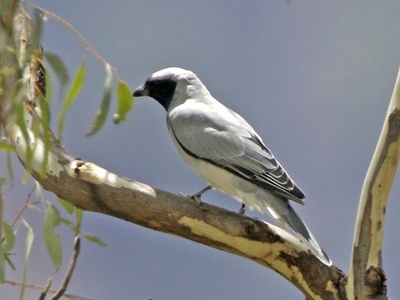
Black-faced Cuckooshrike
A sleek, medium-sized grey bird with a distinct black face and throat. It is known for its habit of shuffling its wings upon landing, earning it the nickname “shufflewing.” It has a pleasant, churring call and is often seen in open woodlands.
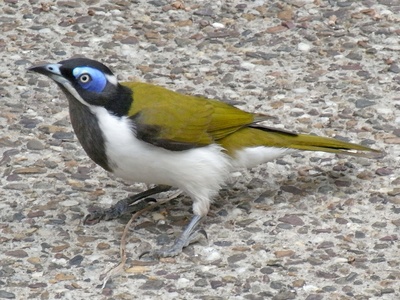
Blue-faced Honeyeater
A large, noisy, and conspicuous honeyeater with olive-green wings, a white belly, and a striking patch of bare blue skin around its eye. They are social birds, often seen in loud, active groups. They sometimes take over and use the abandoned nests of other birds.
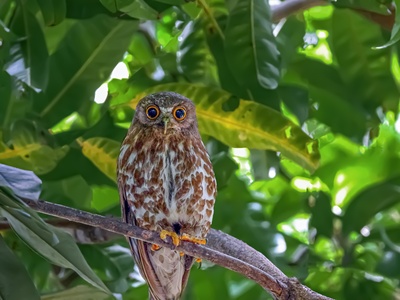
Boobook
Australia’s smallest and most common owl, named for its two-note “boo-book” call, a familiar sound of the night. It is a nocturnal hunter with mottled brown plumage and large eyes, preying on insects and small vertebrates in a variety of habitats.
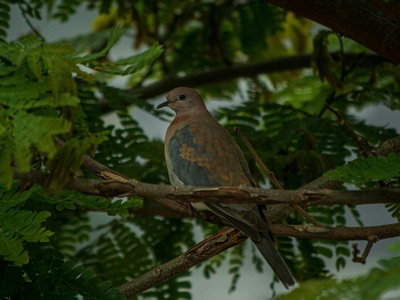
Brown Cuckoo-Dove
A slender, long-tailed dove found in rainforests and dense, wet forests. Its plumage is a rich rusty brown. It is often seen feeding on fruits and berries in the canopy or on the ground. Its call is a distinctive, carrying “coo-woo” sound.
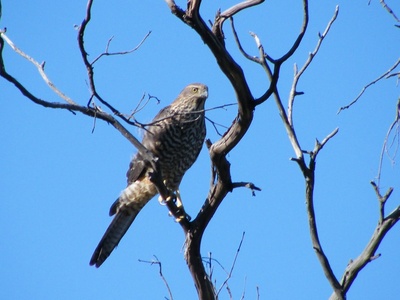
Brown Goshawk
A medium-sized, powerful raptor with a grey head, rufous collar, and finely barred underparts. It is a fierce hunter, preying on birds, mammals, and reptiles. It is known for its agility, weaving through dense forests in pursuit of its prey.
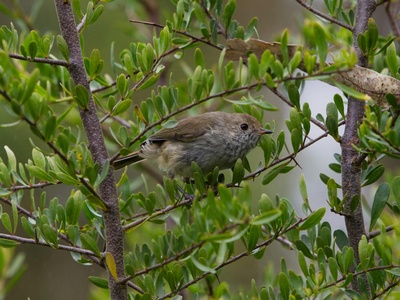
Brown Thornbill
A small, active, and inquisitive bird found in forests, woodlands, and gardens. It has olive-brown upperparts and a finely streaked breast. It is often seen flitting through lower levels of vegetation in small flocks, gleaning for insects.
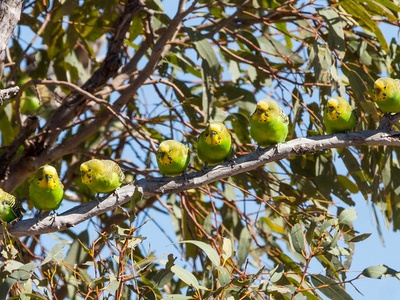
Budgerigar
A small, nomadic parrot famous worldwide as a popular pet. In the wild, these green and yellow birds form huge, spectacular flocks that travel across the Australian outback in search of water and seeds. Their scientific name means “song-parrot with an undulating pattern.”
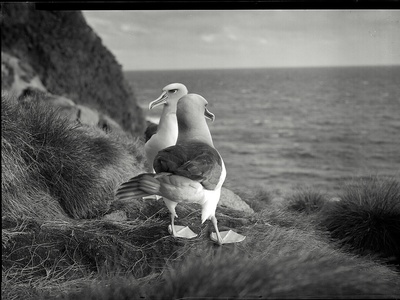
Buller’s Albatross
A medium-sized albatross with a distinctive silvery-grey crown and forehead, a white body, and dark wings. It has a complex bill coloration of black with a yellow stripe along the top and bottom. It is a graceful flyer, often following ships at sea.
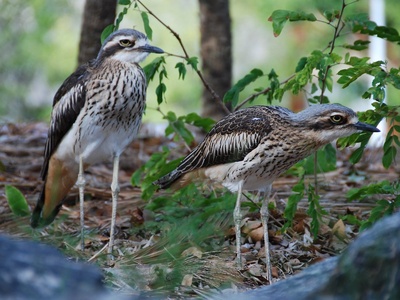
Bush Stone-curlew
A large, ground-dwelling nocturnal bird with long legs and cryptic brown plumage. It is famous for its eerie, wailing call heard at night. It “freezes” when disturbed, relying on its camouflage to avoid detection. Its populations have declined in southern Australia due to predation.
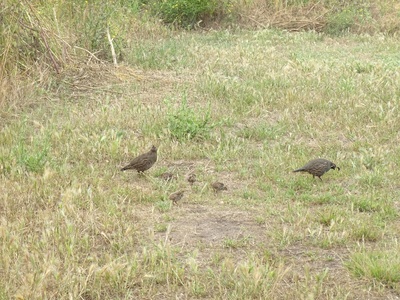
California Quail
A small, plump game bird with a distinctive tear-drop shaped topknot crest. The male has a bold black-and-white face pattern. Originally from North America, it has adapted well to scrubby and agricultural habitats in New Zealand, where it forages on the ground.
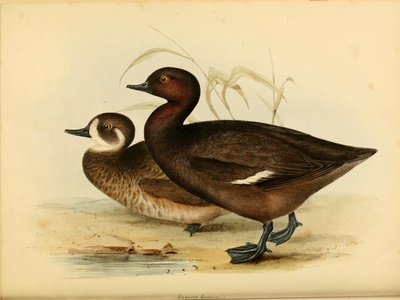
Campbell Teal
A small, flightless, nocturnal duck, once thought to be extinct but rediscovered in 1975. It is one of the world’s rarest ducks. A successful conservation program has led to its reintroduction to the main, now predator-free, Campbell Island.
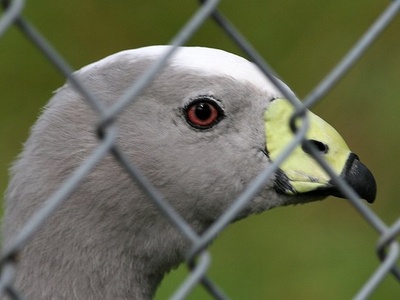
Cape Barren Goose
A large, primitive-looking grey goose with a small head and a prominent lime-green cere on its bill. It is a grazing bird found on coastal grasslands and offshore islands. It was once rare but has recovered due to conservation efforts.
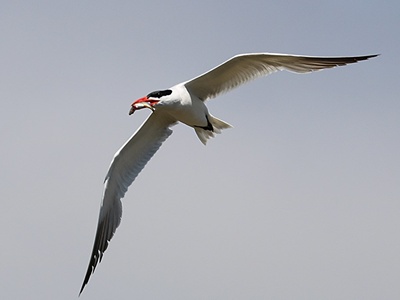
Caspian Tern
The world’s largest tern, it is a powerful bird with a massive, blood-red, dagger-like bill. It has a pale grey back and a slightly shaggy black cap. It can be found in both saltwater and freshwater environments, plunge-diving for fish.
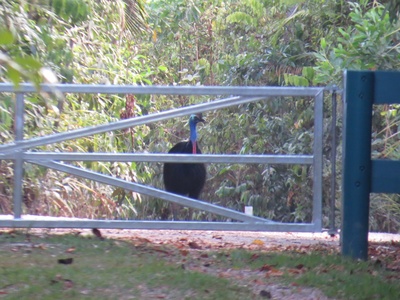
Cassowary (Southern)
A huge, flightless bird of the rainforest, known for its glossy black plumage, vivid blue and purple neck, and a prominent casque on its head. It is famously equipped with a dagger-like claw on each foot and plays a vital role as a seed disperser.
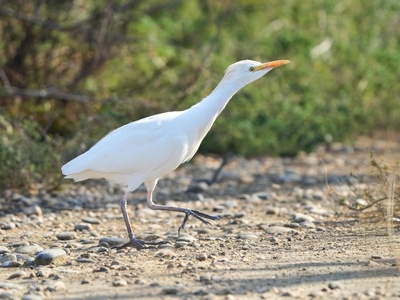
Cattle Egret
A small, stocky white heron that famously associates with livestock, feeding on insects disturbed by grazing animals. During breeding season, it develops buff-orange plumes on its head, neck, and back. It is now a common sight in Australian pastures.
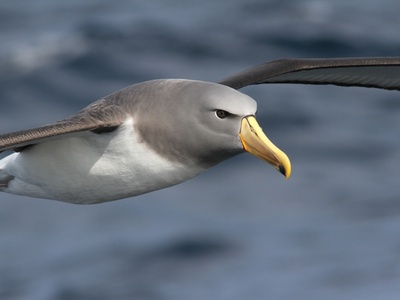
Chatham Albatross
A medium-sized albatross with a unique dark grey head, neck, and throat. Its entire breeding population is confined to a single, tiny, inaccessible island, making it highly vulnerable to any threats or environmental changes.
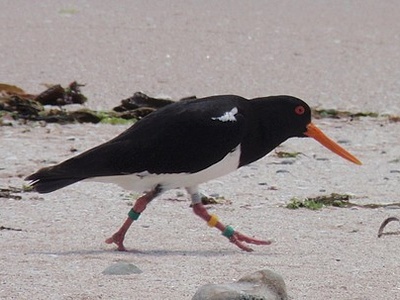
Chatham Oystercatcher
A distinctive black-and-white shorebird with a long, stout, bright orange-red bill. One of the world’s rarest oystercatchers, it is found only on the coastlines of the Chatham Islands, where it faces threats from predation and habitat disturbance.
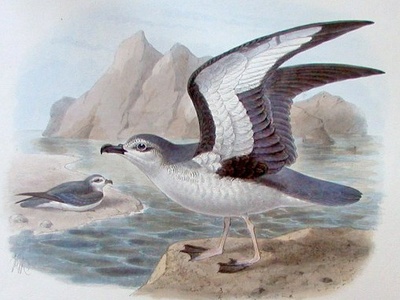
Chatham Petrel
A medium-sized gadfly petrel with a dark grey back, white underparts, and a distinct black bar on the underwing. It was driven to the brink of extinction by predators but is recovering thanks to intensive conservation management, including translocation to predator-free islands.
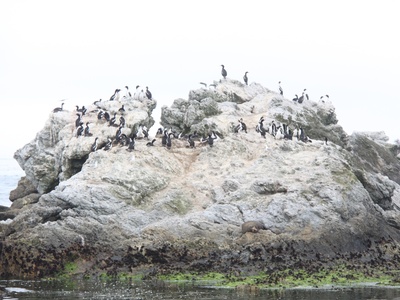
Chatham Shag
A large, pied (black and white) marine cormorant. It is a critically endangered species with a very small population and restricted breeding range. It forages in coastal waters, feeding on small fish and marine invertebrates. Conservation efforts are crucial for its survival.
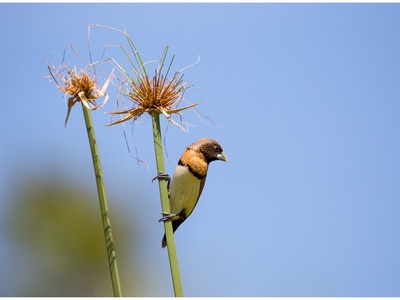
Chestnut-breasted Mannikin
A small, gregarious finch with a chestnut breast, black face, and barred flanks. It is often found in large flocks in grassy woodlands and wetlands, feeding on grass seeds. Its social nature and attractive plumage make it a common sight in its range.
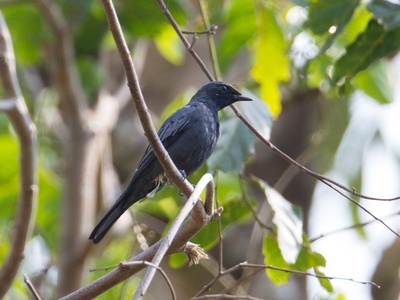
Cicadabird
A small cuckooshrike where the male is a sleek, uniform blue-grey and the female is browner with barred underparts. It is an inconspicuous canopy-dweller in forests, named for its insect-like, buzzing call that resembles a cicada’s song.
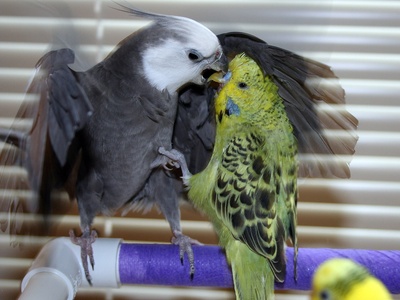
Cockatiel
A small, slender parrot with a distinctive erectile crest. Predominantly grey with a yellow and orange face patch, it is a nomadic bird that travels in flocks to find food and water. It is one of the most popular pet birds globally.
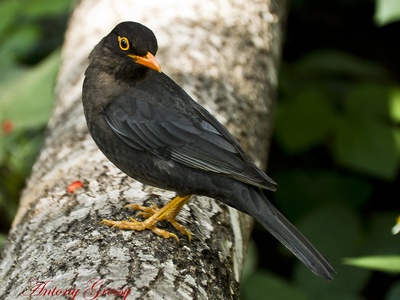
Common Blackbird
A familiar thrush, originally from Europe. The male is glossy black with a bright orange-yellow bill and eye-ring, while the female is dark brown. Renowned for its rich, melodic song, it is common in gardens, parks, and woodlands.
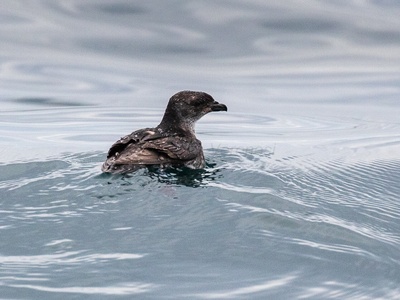
Common Diving Petrel
A small, stocky seabird that resembles a tiny auk. It is black above and white below. It “flies” underwater using its short wings to pursue krill and small fish. It breeds in burrows on offshore islands, visiting only at night to avoid predators.
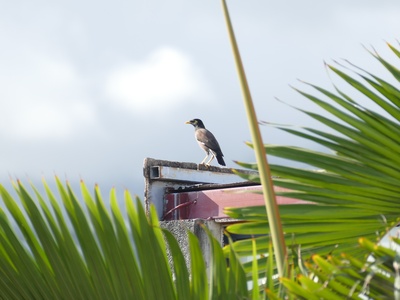
Common Myna
A brown, starling-like bird with a black head and a distinctive yellow patch of skin around the eye. Highly adaptable and aggressive, it often outcompetes native birds for nesting hollows and food resources in urban and agricultural areas.
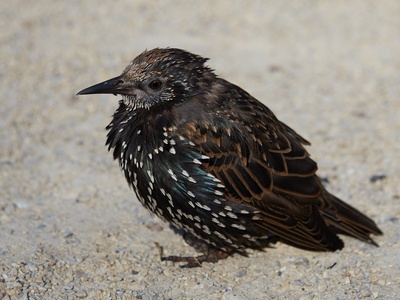
Common Starling
An intelligent and gregarious bird, known for its glossy black plumage with iridescent sheens and its ability to mimic other sounds. Originally from Eurasia, it forms huge, noisy roosts and can be an agricultural pest, but is admired for its aerial displays.
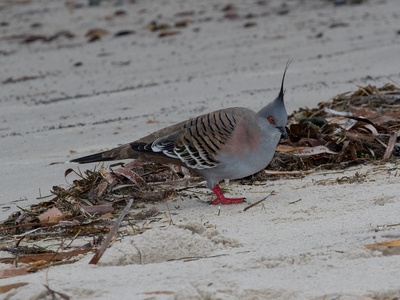
Crested Pigeon
A grey pigeon easily identified by its tall, erect black crest. When it takes off, its wings produce a characteristic metallic whistling sound. A common bird of open woodlands, grasslands, and suburban areas, it has adapted well to human-modified landscapes.
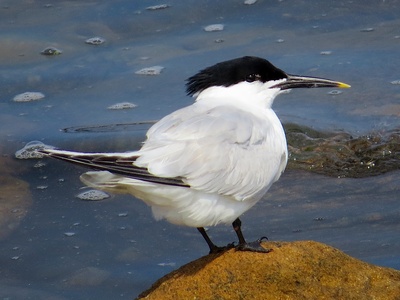
Crested Tern
A large, graceful tern with a shaggy black crest, pale grey back, and a stout yellow bill. It is a common sight along coastlines, where it hunts by plunge-diving for fish. It breeds in dense, noisy colonies on sandy beaches or offshore islands.
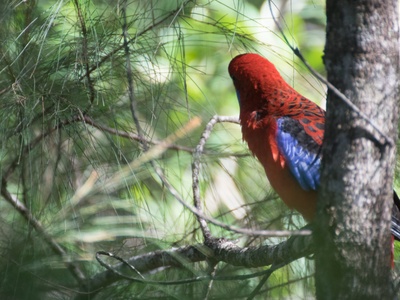
Crimson Rosella
A stunningly beautiful parrot, primarily crimson red with blue cheeks, wings, and tail. Young birds are mostly green, gradually molting into their brilliant adult plumage. It is found in mountain forests and gardens, feeding on seeds, fruits, and nectar.
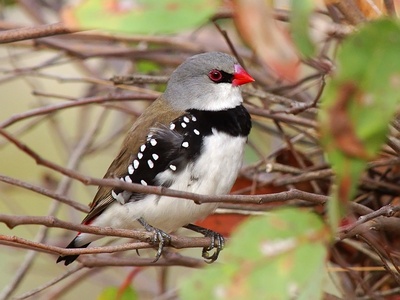
Diamond Firetail
A stunningly patterned finch with a bright red bill and rump, a black breast band, and white-spotted black flanks. It is found in grassy woodlands and open forests. Its populations have declined due to habitat loss, making it a focus for conservation efforts.
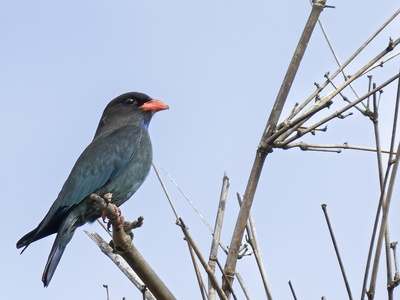
Dollarbird
A member of the roller family, named for the silvery-blue, coin-shaped patches on its underwings, visible in flight. It has a stocky build, a bright red bill, and dark plumage. It perches high on dead branches, sallying out to catch large insects mid-air.
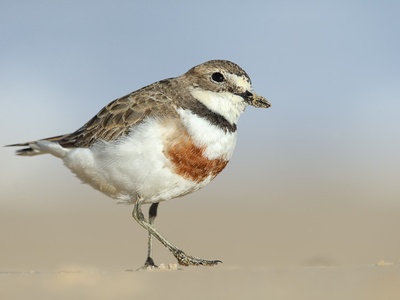
Double-banded Plover
A small shorebird, also known as the Banded Dotterel. In breeding plumage, it has two distinct bands on its white underparts: a black upper band and a wider chestnut lower band. It nests on open ground like riverbeds and beaches.
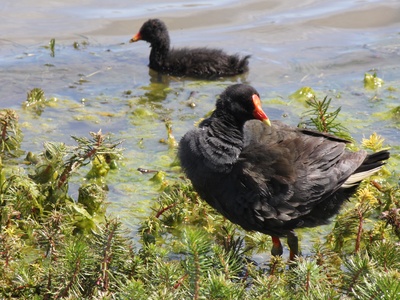
Dusky Moorhen
A dark, chicken-like waterbird with a red facial shield and bill tipped with yellow. It is similar to the Eurasian Moorhen but lacks the white flank stripe. It is found on freshwater swamps and lakes, feeding on vegetation and small aquatic creatures.
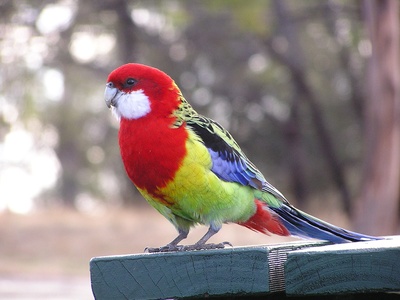
Eastern Rosella
A brightly colored, medium-sized parrot with a red head, white cheeks, yellow-green body, and blue wings. It is a common sight in open woodlands, grasslands, and suburban parks and gardens, where it feeds on the ground on seeds and grasses.
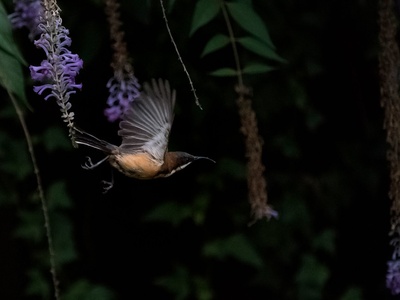
Eastern Spinebill
A small honeyeater with a very long, fine, downcurved bill, perfectly adapted for probing tubular flowers for nectar. It has a distinctive chestnut throat patch and a lively, energetic flight. It is often seen hovering like a hummingbird while feeding in heathlands and gardens.
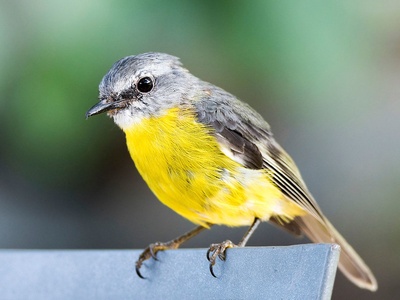
Eastern Yellow Robin
A charismatic and confiding small bird with a bright yellow breast, grey back, and olive-green rump. It is famous for its habit of perching sideways on tree trunks. It often follows people through the bush, catching insects disturbed by their passage.
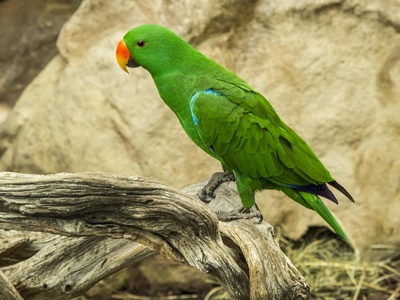
Eclectus Parrot
A large parrot with extreme sexual dimorphism. The male is a brilliant emerald green, while the female is a stunning combination of bright red and blue/purple. They are found in tropical rainforests, where they feed on fruits, seeds, and nuts in the canopy.
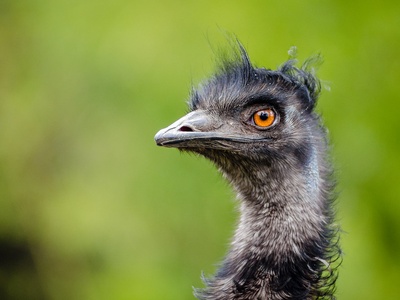
Emu
The second-largest living bird by height, the Emu is a flightless icon of Australia. It has shaggy grey-brown plumage, long powerful legs built for running, and a gentle, inquisitive nature. It is highly nomadic, covering vast distances to find food and water.
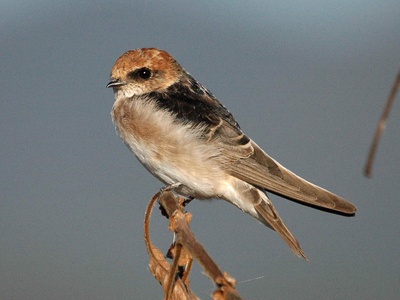
Fairy Martin
A small member of the swallow family with a rufous crown and glossy blue-black back. It is best known for its incredible colonial nests—clusters of bottle-shaped mud pellets built under bridges, in caves, or on cliff faces, often with hundreds of nests together.
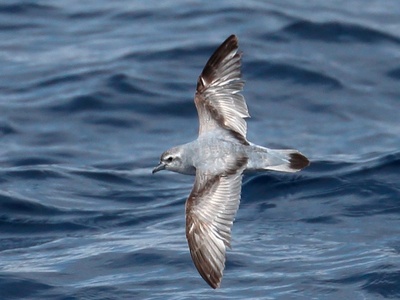
Fairy Prion
A small, blue-grey petrel with a distinctive dark “M” shape across its upper wings. Like other prions, it has a broad bill with fringes for filtering small crustaceans from the sea surface. It breeds in vast colonies, nesting in burrows.
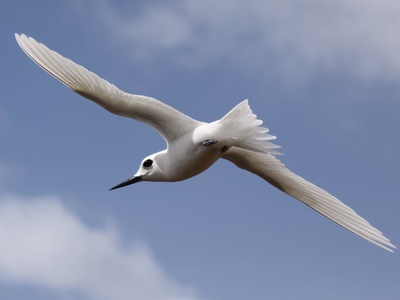
Fairy Tern
A very small, delicate tern with a white body, grey wings, and a yellow-orange bill. It nests in small scrapes on sandy beaches, making it extremely vulnerable to human disturbance, coastal development, and predation. Conservation efforts are in place to protect its nesting sites.
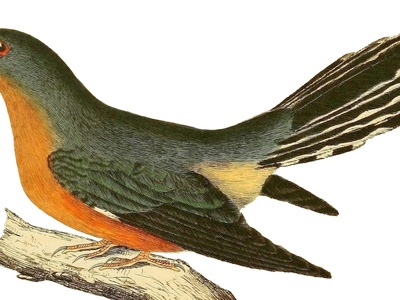
Fan-tailed Cuckoo
A medium-sized cuckoo with slate-grey upperparts, rufous underparts, and a long, fan-shaped tail with white notches. It is a brood parasite, laying its eggs in the nests of smaller birds like thornbills and wrens. Its call is a sad, descending trill.
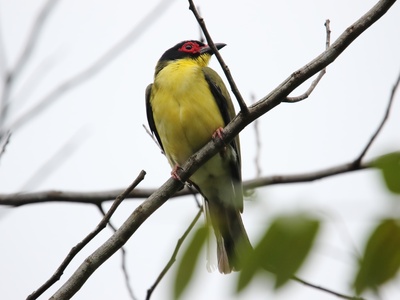
Figbird
A medium-sized, gregarious bird related to orioles. The male is brightly colored with olive-green plumage and bare red skin around the eye, while the female is plainer brown. They are noisy and social, often found feeding on figs and other fruits in large flocks.
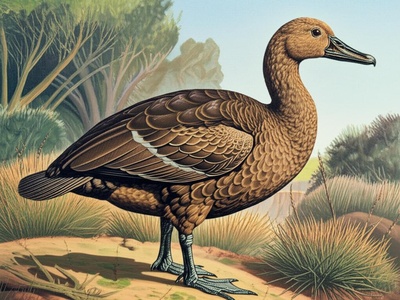
Finsch’s Duck
An extinct, large, flightless duck. Fossil records show it was once New Zealand’s most common duck, living in scrubland and open forest rather than wetlands. It is believed to have been driven to extinction by early human settlement and introduced predators around 1650.
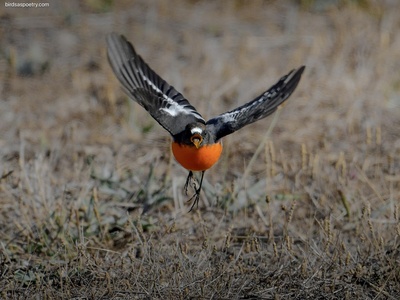
Flame Robin
A small, migratory robin. The male is striking, with a brilliant flame-orange throat and breast, a dark grey back, and a white forehead spot. It breeds in high-altitude forests and moves to more open, lower-altitude country in the winter.
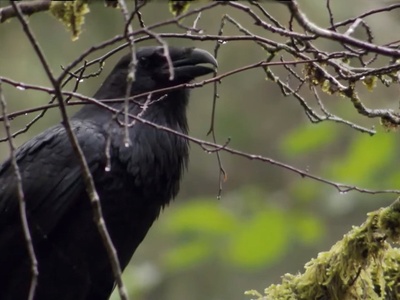
Forest Raven
The only corvid native to Tasmania, this is a large, robust, all-black bird with a heavy bill. Intelligent and adaptable, it is an omnivorous scavenger found in a wide range of habitats, from dense forests to coastal areas and even suburban parks.
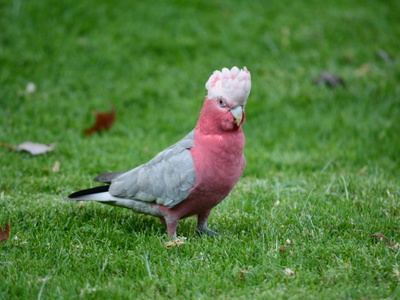
Galah
One of Australia’s most common and familiar cockatoos. It is unmistakable with its bright pink face and breast, grey back and wings, and a light pink crest. Galahs are highly social and intelligent, often seen in large, noisy flocks in open country and urban areas.
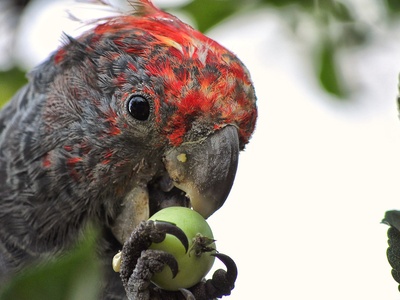
Gang-gang Cockatoo
A distinctive cockatoo, where the male has a slate-grey body and a spectacular scarlet-red head and wispy crest. The female is dark grey with subtle barring. They are found in cool, wet mountain forests and woodlands, feeding quietly on seeds of eucalypts and acacias.
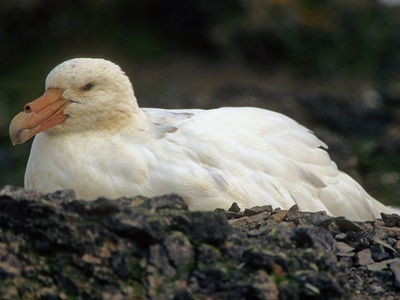
Giant Petrel (Southern)
A very large, powerfully built seabird, often called the “vulture of the seas.” It is a formidable predator and scavenger, feeding on carrion (seals, penguins), fish, and other seabirds. It occurs in both a dark morph and a less common white morph.
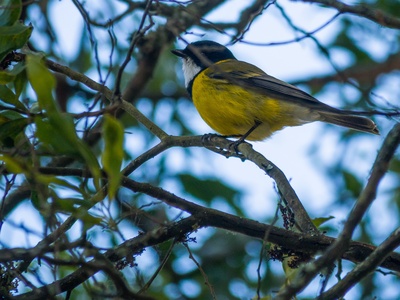
Golden Whistler
A beautiful bird renowned for its rich, musical song. The male has a brilliant golden-yellow belly, a white throat separated by a black breast-band, and an olive-green back. Females are much duller. They are found in forests and woodlands, gleaning for insects.
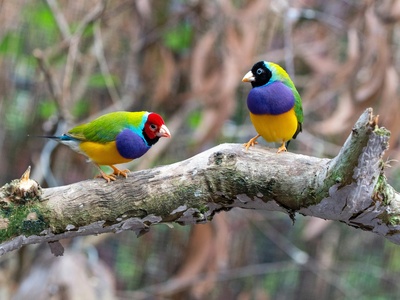
Gouldian Finch
Often considered Australia’s most beautiful finch, this species is spectacularly colorful with a purple breast, yellow belly, and green back. Individuals can have a red, black, or (rarely) yellow head. Wild populations have declined significantly, though it is common in aviculture.
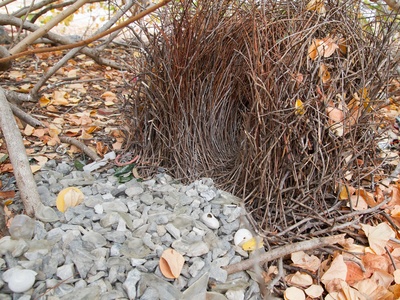
Great Bowerbird
The largest of Australia’s bowerbirds. The male, a drab grey-brown bird with a lilac-pink nuchal crest, builds an impressive avenue-style bower. He decorates it with white and green objects, like shells, bones, and stones, to perform a courtship display for females.
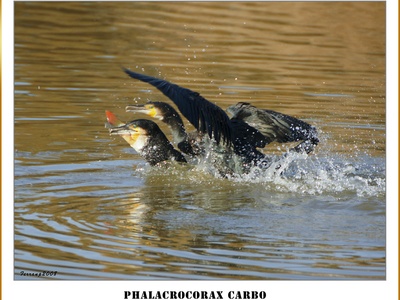
Great Cormorant
A large, dark waterbird found in both coastal and inland waters. In Australasia, it is often known as the Black Shag. It is an expert fisher, often seen perched with its wings spread out to dry after diving for food.
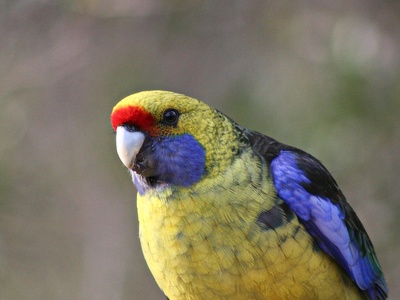
Green Rosella
Australia’s largest rosella, it is a striking parrot with a yellow head and underparts, a green back, and blue wings. It is found in a wide variety of habitats across Tasmania, from dense forests to coastal heathlands and suburban gardens.
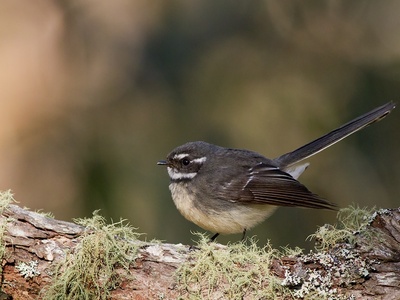
Grey Fantail
A small, energetic insectivore famous for its restless, acrobatic flight and its habit of constantly fanning its long tail. It is a common and beloved bird of forests, woodlands, and gardens, known for its cheerful, high-pitched song.
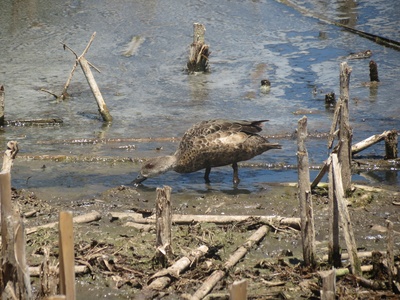
Grey Teal
A small, mottled-grey dabbling duck with a distinctive pale face and throat. It is a highly nomadic species, travelling long distances to find temporary wetlands that appear after rain. It is one of the most common ducks in Australia.
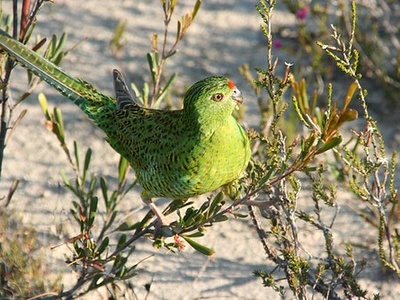
Ground Parrot
A rare, secretive, ground-dwelling parrot with cryptic green and yellow-black plumage that provides excellent camouflage in its heathland habitat. It is mostly active at dawn and dusk and is more often heard than seen, with a distinctive, bell-like call.
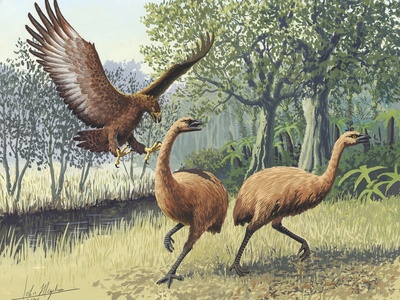
Haast’s Eagle
The largest eagle known to have existed, it was the apex predator of New Zealand’s terrestrial ecosystem. With a wingspan up to 3 meters, it preyed on giant flightless birds like the moa. It became extinct around 1400 AD, following the decline of its prey.
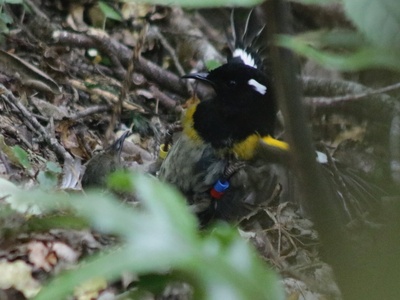
Hihi
Also known as the Stitchbird, this rare honeyeater-like bird is the only member of its family. The male is brightly colored with a black head, yellow shoulder patches, and a white ear tuft. It is a crucial part of intensive conservation and translocation programs.
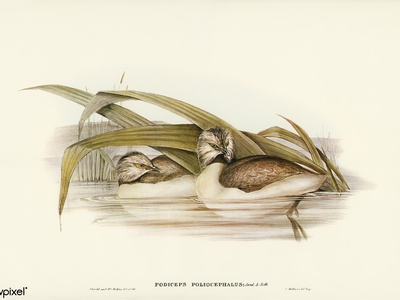
Hoary-headed Grebe
A small, grey waterbird that becomes more striking in breeding season when it develops fine, silvery-white streaks on its head, giving it a “hoary” look. It is a diving bird, found on open lakes and estuaries, often forming large flocks outside the breeding season.
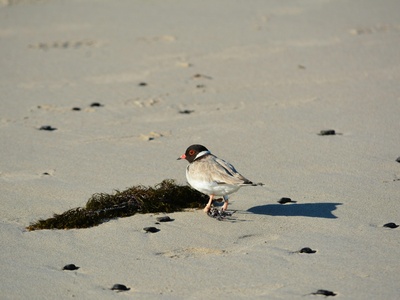
Hooded Plover
A small, stocky shorebird with a black head or “hood” and a red eye-ring. It nests on sandy beaches above the high-tide line, making its eggs and chicks extremely vulnerable to human disturbance, dogs, and introduced predators.
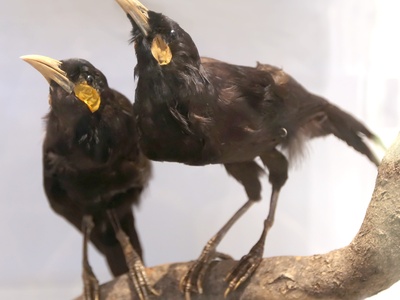
Huia
An iconic extinct songbird famous for the dramatic difference in bill shape between the sexes. The male had a short, stout bill for pecking wood, while the female had a long, curved bill for probing. It was declared extinct in the early 20th century.
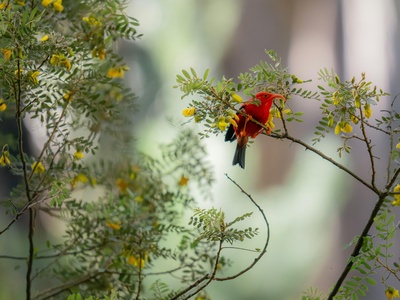
ʻIʻiwi
A spectacular, vermilion-red Hawaiian honeycreeper with a long, deeply curved, salmon-colored bill, perfectly adapted for sipping nectar from native flowers. Once common, its population has collapsed due to habitat loss and avian malaria, and it is now mostly restricted to high-elevation forests.
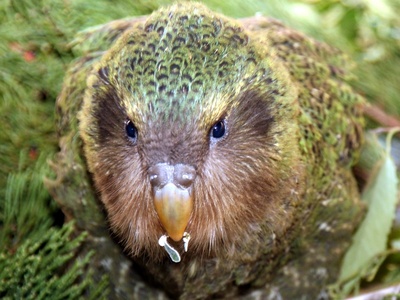
Kakapo
A critically endangered, nocturnal, flightless, and lek-breeding parrot. It is the world’s heaviest parrot. Once widespread, it was decimated by introduced predators. An intensive recovery program has slowly increased its population from a low of 51 individuals in 1995.
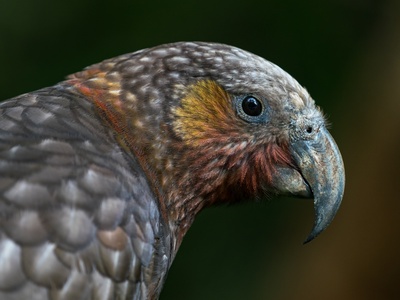
Kākā
A large, intelligent, and sociable forest parrot with olive-brown plumage that flashes with crimson and orange under its wings in flight. It is known for its raucous calls and inquisitive nature. It is threatened by predation from introduced mammals like stoats and possums.
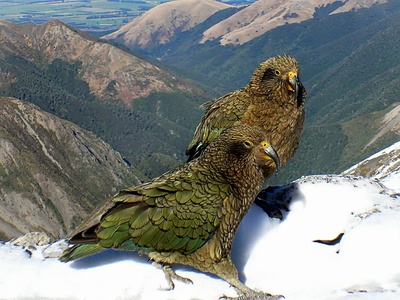
Kea
The world’s only alpine parrot, the Kea is renowned for its intelligence and curiosity. It has olive-green plumage with brilliant orange underwings. Its inquisitive nature often leads it into conflict with humans as it investigates cars, backpacks, and buildings.
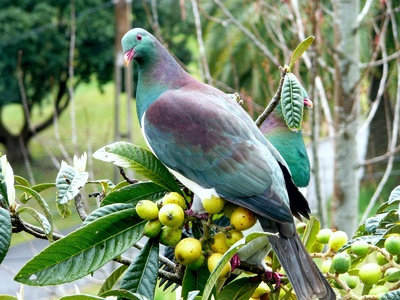
Kererū
The large, stunning New Zealand Pigeon, with iridescent green-purple plumage on its head and back, and a contrasting white breast. It makes a distinctive “whoosh” sound with its wings in flight. It is the only native bird large enough to swallow and disperse large native fruits.
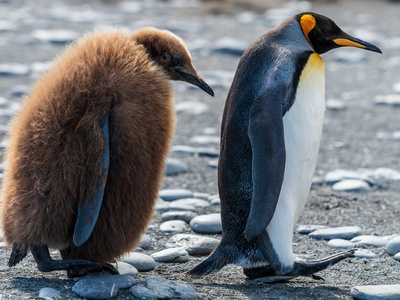
King Penguin
The second-largest species of penguin, it is a striking bird with a black head, silver-grey back, and a vivid golden-orange patch on its upper chest and auriculars. It forms huge, noisy breeding colonies on subantarctic islands.
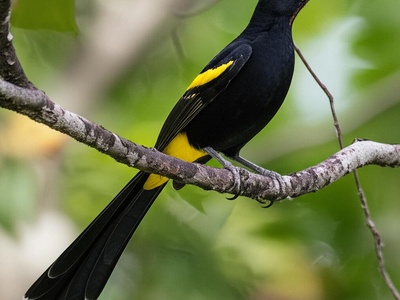
Kioea
An extinct, large honeyeater whose name means “stand tall.” It was primarily black and yellow with a long tail. It disappeared in the mid-19th century, likely due to habitat loss and introduced diseases, before its ecology could be properly studied.
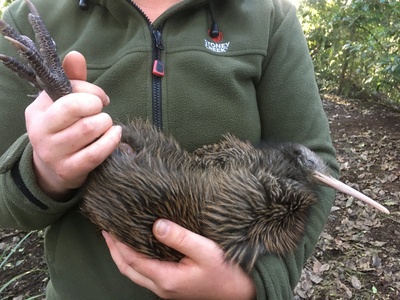
Kiwi (North Island Brown)
A flightless, nocturnal icon of New Zealand. It has hair-like feathers, tiny wings, and a very long bill with nostrils at the tip, which it uses to sniff out invertebrates in the soil. Despite its iconic status, it is vulnerable to introduced predators, especially dogs.
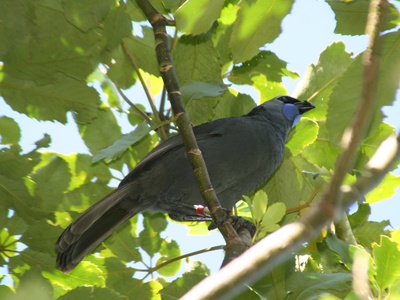
Kōkako (North Island)
A beautiful, dark bluish-grey forest bird with a black face mask and striking blue wattles. It is a weak flier, preferring to run and bound through the forest canopy. Renowned for its haunting, organ-like song, it has recovered from near-extinction thanks to intensive conservation.
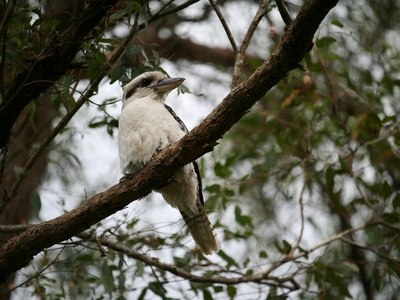
Kookaburra (Laughing)
A large kingfisher famous for its iconic call, which sounds like raucous human laughter. With a robust body, a large head, and a prominent bill, it is a predator of insects, reptiles, and small mammals, often seen in open woodlands and suburban gardens.
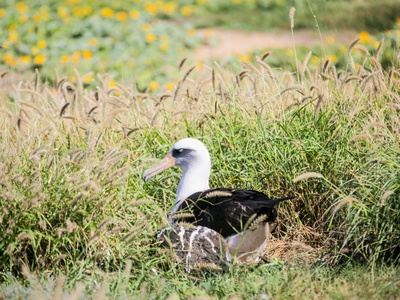
Laysan Albatross
A large, graceful seabird, predominantly white with dark upperwings. It is a master of slope soaring, covering huge distances across the ocean. The vast majority of the world’s population nests in the Northwestern Hawaiian Islands, a key part of the Polynesian region.
